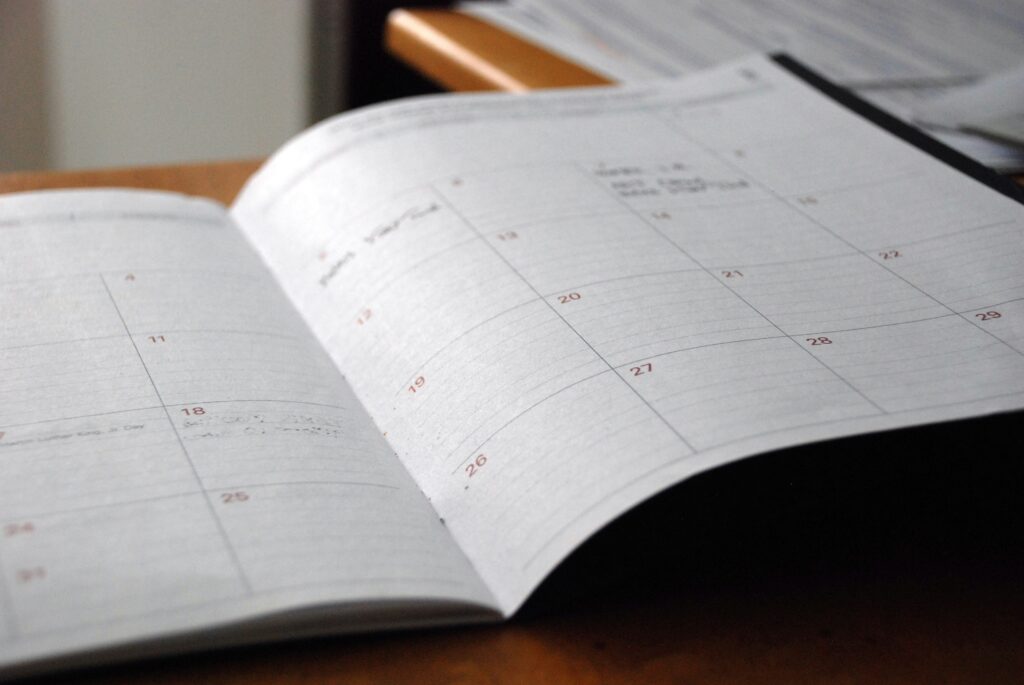Project review sessions are high points in my project meeting calendar. I love sharing the progress and achievements of the project team. Where we have blocking issues requiring escalation, the review meetings are an opportunity to get senior management focused on resolving the problems and progressing the project. Lastly, a review meeting allows senior stakeholders to view your project management skills and build their confidence in your ability to deliver projects.
And sure, in some meetings, you will be delivering difficult news. However, the information will not be unexpected if you prepare the groundwork well before the meeting. The stakeholders will be prepared for options to unblock and, hopefully, be more open to engage and solve.

A project review session is an opportunity to show the project’s achievements. It is also an opportunity to demonstrate your skills as a capable, skilled project manager.
Why have a project status review?
Project status review meetings are crucial to the success of a project and your success as a project manager. These meetings serve the following purpose:
- One source of truth for project communications. The meeting content gathers together the crucial communication threads since the last session. This content is effectively baselined and forms a single source of truth, rather than emails or Slack messages becoming the evidence for progress updates.
- Manage the message. It is the project manager’s opportunity to “manage the message” about the project to the senior stakeholders. The stakeholder may have heard rumours or coffee machine chat about the project that needs to be corrected. The meeting is your opportunity to ensure the message the stakeholder receives is the one that represents the project. When I say “manage the message”, I don’t mean to spin or be economical with the truth. As the project manager, you will know your project inside out. In this meeting, it is your job to communicate the authentic and realistic status of the project, backed up with details.
- Time with senior managers. Most senior managers and stakeholders are busy, very busy. Getting in front of them for 30-45 minutes is a golden opportunity to raise issues and decisions you and the team do not have the positional authority to make. Don’t waste this opportunity; you may only see these managers once a month, so use it wisely and effectively.
- Promote confidence in the project. Finally, this meeting is your opportunity as the project manager to give the senior stakeholders confidence that the project is in safe hands and they have all the information they need. The content provided by this meeting should be brief, to the point, and, most importantly, it should be accurate.
Meeting objective
The objective of the project status review session is twofold:
- To communicate the actual status of the project.
- To enlist the senior stakeholders to assist in resolving issues that the team needs the authority to resolve.
Many traditional project management frameworks have a long list of aims for this type of meeting. However, if you concentrate on the two goals above, you will not go far wrong.
Meeting frequency
Once a month will be more than adequate for most projects.

If your project has an exceptionally high profile and much stakeholder interest, it may be more often. But the reality is that most senior stakeholders will need help making time for a more frequent meeting.
Who to invite?
As with keeping the content tight, only invite the stakeholders with project influence and an interest in making the project successful.
Invite the following roles:
- Project manager (obviously, it’s your meeting!).
- Customer stakeholders.
- Customer sponsor.
- Scrum master or team lead (not for every meeting; only if there is content or issues that they will be able to supply more detail than you can provide).
- Product owner (not for every meeting; only if there is content or issues that they will be able to provide more detail than you can supply).
- Projects delivery manager (probably your boss; only invite if this project makes up part of a portfolio of projects the delivery manager is responsible for).
- Finance manager (should be covered by the customer or budget sponsor; however, sometimes organisations insist on having finance department involvement in these meetings).
What information should be shared?
Keep the information content to the minimum necessary to meet the meeting’s objectives. There are two reasons for this:
- The meeting participants are busy people. Padding the meeting out with fluff and irrelevant details will irritate them. It may make them less likely to attend future meetings if they think their time could be better spent elsewhere.
- On many occasions, I’ve been asked at the start of the session to compress the meeting down to 15 or 20 minutes as other more important issues need to be attended to by a senior stakeholder. You must identify the key messages if you have a waffling, verbose slide pack. So, keep the content to the point.
With this in mind, what content needs to be included?
- RAG status. Current and the last reported status.
- Timeline. Progress update and what has changed since the last meeting.
- Budget. This can be either financial or effort, or both. Include spending to date, changes since the last meeting, and a forecast of the spending to the end of the project.
- Scope. Report any significant, impactful scope change. Include additions to the scope and any scope that has been removed.
- People. Report significant changes to personnel and the impact of the change.
- Risks and issues. Only report significant risks and issues. Don’t report the whole log if you have a risks and issues log. Report the ones you need to get on the stakeholders’ radar because you may need the stakeholders’ assistance in the future. Finally, report the issues that you cannot mitigate now. Be clear about what the problem is, what the impact is, and what the options are. Then, ask for their input to solve.
- Any other business.
- Date of next meeting.
Distribute the slides and any supporting material to all the stakeholders. Do this before the meeting to familiarise the stakeholders with the material. Giving the stakeholders a chance to read and digest the content, thus allowing them to think through questions and clarification beforehand, will significantly improve the quality of the meeting. However, only a few, if any, stakeholders will pre-read the slides, so don’t be surprised or disappointed if they don’t.
How to prepare the slides
There is plenty of content online about how to prepare slides and presentations. I won’t repeat that information here; you can easily find it.
However, my loose guidance for slides is:
- Bullets. Try to avoid too many bullets. Presentation with death by bullets will disengage your meeting attendees.
- Use pictures and diagrams. Images will always convey far more information than text. Use them whenever possible.
- Keep it simple. Resist the temptation for slide animations and transitions. They tend to look rubbish and add nothing to the content.
How do you run the meeting?
It is essential to prepare for the meeting beforehand. Of course, you will prepare the slides. However, also think about the tone and core message you want to convey during the session. What messages do you want the attendees to leave with? What will “good look like” at the end of the meeting?
This can be as simple as ensuring the stakeholders have unblocked the issues you escalated. Or they are up to speed with the progress and status of the project rather than relying on hearsay and gossip.
Or, it could be more nuanced. How do you want the attendees to feel at the end of the session? Is the project in control, with a firm hand on the tiler? There is a sense of urgency because pressing issues must be resolved?
This type of unspoken information and emotions takes practice and skill to deliver. Indeed, much of the skill may be innate, so some will be better at this than others. It’s an area that could be more developed for me, so I’m always looking to improve and refine these skills.

Once you have established these softer desired outcomes of the meeting, it is time to run the session.
I send the slides out the day before the meeting. As discussed earlier, hopefully, people will read the slides and be better prepared to engage with the content. However, people are busy, so this tactic only sometimes pays dividends. But it is always worth a try.
The meeting can be in-person, virtual or a mixture of the two. Mixed in-person and virtual meetings are more challenging to run. Balancing attention between the two groups is tricky and more complex than an all in-person or all virtual meeting.
At the start of the meeting, establish if all the attendees plan to stay for the whole meeting duration. This question sometimes prompts managers to say they only have half the meeting time available. Establishing this now allows you to focus on the critical content and the implicit information outcomes you established earlier. This is why preparation is essential to better handle the unexpected.
With the actual meeting time established, get on and run the meeting. Keep the information engaging. Take notes of feedback and actions. Keep an eye on the time. If the session runs late, offer to take discussion points offline. This is a balancing act; you want the meeting to explore the topics, but you want to get through all the content. An alternative approach is skimming some content to reach the essential points you want to cover.
When you have completed the content you want to cover, ask if there are any other topics the meeting wants to go through. Always leave some time for this discussion. These items raised by the stakeholders can be the most enlightening of the meeting, allowing you insight into their thinking and concerns.
After the meeting
When the meeting has finished, do the following:
- Send slides. If you still need to do so, send a copy of the slides to the meeting participants.
- Decisions and actions. Confirm and share details of any decisions made and actions decided during the meeting.
- Track actions. Add actions that are for you, or you need to track to your tasks manager.
- Share with team. I like to run through the slides and presentation with the team. This allows them to be aware of project status messages being communicated to the senior stakeholders and can propagate them in their interactions with others.
Wrap up
Hopefully, this article has persuaded you of the importance of project status review meetings. With the proper preparation and delivery, these meetings can be pivotal in your project’s smooth running and value-driven outcomes. It is your opportunity to manage the message to the senior stakeholder team and get them to help unblock issues the team struggles to influence.
Finally, well-run review meetings allow senior stakeholders to view your project management skills and build their confidence in your ability to deliver projects.
I’m Mark Ford. I’m a project manager and writer.
Unlock exclusive PM knowledge
Get in-depth tips, fresh perspectives, & my latest blog posts delivered straight to your inbox – subscribe & master your projects


